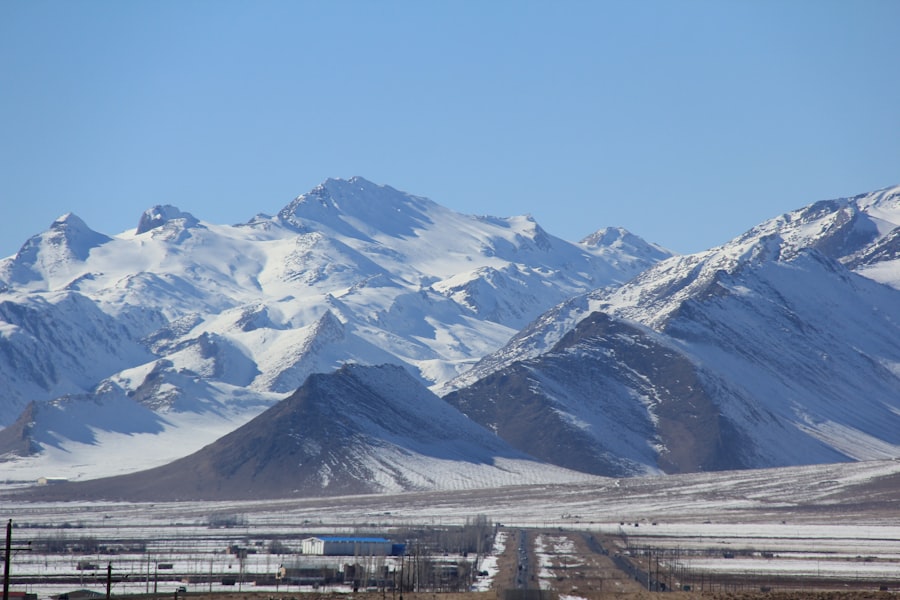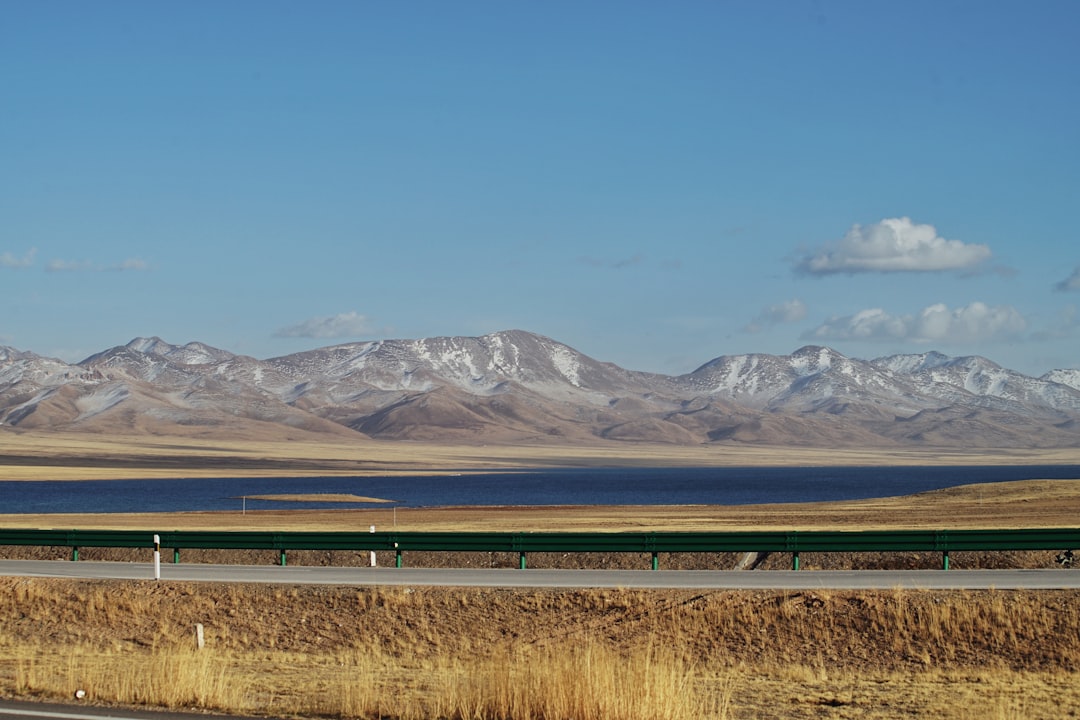The Polar Silk Road represents a transformative vision for global trade, emerging as a significant maritime route that connects the East and West through the Arctic region. This ambitious initiative, part of China’s broader Belt and Road Initiative, aims to facilitate trade by leveraging the Northern Sea Route, which is becoming increasingly navigable due to climate change. As ice melts and temperatures rise, the Arctic is poised to become a vital corridor for shipping, offering shorter transit times and reduced shipping costs compared to traditional routes through the Suez Canal or around the Cape of Good Hope.
The concept of the Polar Silk Road is not merely about economic gain; it also embodies a strategic shift in global trade dynamics. Countries bordering the Arctic, including Russia, Canada, and Norway, are keenly aware of the potential benefits and challenges that this new route presents. As nations invest in infrastructure and technology to support Arctic navigation, the implications for international trade, environmental sustainability, and geopolitical relations are profound.
The Polar Silk Road is thus not only a pathway for goods but also a symbol of the changing landscape of global commerce in the 21st century.
Key Takeaways
- The Polar Silk Road is a strategic trade route that connects Asia to Europe via the Arctic region, offering a shorter and more cost-effective alternative to traditional shipping routes.
- The Arctic region plays a significant role in global trade due to its potential for shorter shipping routes, access to untapped natural resources, and the opening of new markets.
- Navigating the Northern Sea Route presents both challenges, such as harsh weather conditions and ice hazards, and opportunities, including reduced transit times and fuel savings for shipping companies.
- Infrastructure and logistics development along the Polar Silk Road are crucial for supporting increased shipping activity and ensuring the safety and efficiency of maritime operations in the Arctic.
- Environmental concerns and sustainability in the Arctic are of utmost importance, as increased shipping activity and resource extraction could have detrimental effects on the fragile ecosystem and indigenous communities in the region.
The significance of the Arctic region in global trade
The Arctic region has long been viewed as a remote and inhospitable area, but its significance in global trade is rapidly evolving. With the melting of polar ice caps, previously inaccessible shipping lanes are opening up, allowing for more efficient transportation of goods between major markets in Europe and Asia. The Northern Sea Route, in particular, has emerged as a key player in this transformation, offering a direct passage that can significantly reduce travel time for cargo ships.
This shift is not just about speed; it also has the potential to lower shipping costs and fuel consumption, making it an attractive option for businesses looking to optimize their supply chains. Moreover, the Arctic is rich in natural resources, including oil, gas, and minerals, which further enhances its importance in global trade. As countries seek to secure energy supplies and raw materials, the Arctic’s untapped reserves become increasingly appealing.
However, this newfound significance also raises questions about environmental stewardship and the rights of indigenous populations who have historically inhabited these regions.
Challenges and opportunities of navigating the Northern Sea Route

While the Northern Sea Route offers numerous advantages for shipping, it is not without its challenges. Navigating these icy waters requires specialized knowledge and equipment due to unpredictable weather conditions and shifting ice patterns. The Arctic environment can be harsh and unforgiving, posing risks to vessels that are not adequately prepared.
Despite these challenges, opportunities abound for those willing to invest in Arctic navigation. Advances in technology are making it easier to monitor ice conditions and navigate safely through treacherous waters.
Furthermore, as more countries recognize the potential of the Northern Sea Route, there is a growing interest in developing infrastructure such as ports and support services that can facilitate shipping operations. This investment not only enhances safety but also opens up new economic avenues for local communities and businesses involved in Arctic trade.
Infrastructure and logistics along the Polar Silk Road
| Country | Infrastructure and Logistics | Investment |
|---|---|---|
| China | Port of Tianjin, Northern Sea Route | Billions of dollars |
| Russia | Port of Murmansk, Northern Sea Route | Strategic investment |
| Norway | Port of Tromsø, Arctic railway | Government funding |
| Finland | Port of Helsinki, Arctic railway | Public-private partnerships |
The development of infrastructure along the Polar Silk Road is crucial for realizing its full potential as a major trade route. Currently, many areas along the Northern Sea Route lack adequate ports and logistical support systems necessary for large-scale shipping operations. However, countries like Russia are actively investing in port facilities and icebreaker fleets to enhance their capabilities in this region.
The establishment of modern ports equipped with advanced technology will enable faster turnaround times for vessels and improve overall efficiency in Arctic shipping. Logistics also play a vital role in ensuring that goods can be transported seamlessly along this route. The integration of supply chain management systems that account for the unique challenges of Arctic navigation will be essential.
This includes real-time tracking of vessels, efficient scheduling to avoid adverse weather conditions, and contingency plans for emergencies. As infrastructure improves and logistics become more sophisticated, the Polar Silk Road could transform into a reliable and efficient corridor for international trade.
Environmental concerns and sustainability in the Arctic
As interest in the Polar Silk Road grows, so too do concerns about its environmental impact. The Arctic is one of the most fragile ecosystems on the planet, home to unique wildlife and indigenous communities that depend on its resources for their livelihoods. Increased shipping traffic raises fears of oil spills, pollution, and disturbances to marine life.
The potential for accidents or environmental disasters is heightened by the challenging conditions of Arctic navigation. To address these concerns, there is a pressing need for sustainable practices in Arctic shipping. This includes implementing stringent regulations on emissions from vessels, ensuring that shipping companies adhere to environmental standards, and investing in research to better understand the ecological impacts of increased maritime activity.
International cooperation will be essential in establishing guidelines that protect the Arctic environment while allowing for responsible economic development.
Geopolitical implications of the Polar Silk Road

The emergence of the Polar Silk Road has significant geopolitical implications that extend beyond economic interests. As nations vie for influence in the Arctic region, issues related to territorial claims, resource rights, and environmental protection come to the forefront. Countries like Russia have been particularly proactive in asserting their presence in the Arctic, leading to tensions with other nations that have competing interests in this strategically important area.
The geopolitical landscape is further complicated by the involvement of non-Arctic states such as China, which views the Polar Silk Road as an opportunity to expand its influence in global trade. This has led to concerns among Arctic nations about sovereignty and control over shipping routes and resources. As competition intensifies, diplomatic efforts will be crucial in fostering cooperation among nations while addressing security concerns related to increased military presence in the region.
Technology and innovation in navigating the Arctic waters
Advancements in technology are playing a pivotal role in shaping the future of navigation in Arctic waters. Innovations such as satellite imagery and real-time data analytics are enhancing situational awareness for vessels operating in these challenging environments. These technologies allow shipping companies to monitor ice conditions more effectively, plan routes that minimize risks, and respond quickly to changing weather patterns.
Moreover, developments in vessel design are making ships more capable of navigating icy waters. Ice-class vessels equipped with reinforced hulls and advanced propulsion systems are becoming increasingly common as companies seek to ensure safe passage through the Northern Sea Route. The integration of autonomous systems is also on the horizon, with potential applications ranging from unmanned vessels to automated ice monitoring systems that could revolutionize how shipping operates in the Arctic.
International cooperation and governance in the Arctic region
The complexities of navigating the Polar Silk Road necessitate robust international cooperation and governance frameworks. Given the shared interests of multiple nations in the Arctic region, collaborative efforts are essential for addressing challenges related to environmental protection, resource management, and maritime safety. Organizations such as the Arctic Council play a crucial role in facilitating dialogue among Arctic states and promoting sustainable development practices.
Effective governance will require balancing national interests with collective responsibilities toward protecting the Arctic environment. This includes establishing clear guidelines for shipping operations, ensuring compliance with international regulations, and fostering partnerships between governments, indigenous communities, and private sector stakeholders. By working together, nations can create a framework that supports economic growth while safeguarding one of the planet’s most vulnerable ecosystems.
Economic benefits and risks of the Polar Silk Road
The economic benefits associated with the Polar Silk Road are substantial but come with inherent risks that must be carefully managed. On one hand, shorter shipping routes can lead to significant cost savings for businesses engaged in international trade. The potential for increased access to untapped resources also presents lucrative opportunities for investment and development in various sectors such as energy extraction and tourism.
However, these economic prospects must be weighed against potential risks such as fluctuating market conditions, geopolitical tensions, and environmental liabilities. Companies operating in the Arctic face unique challenges that can impact profitability, including high operational costs associated with extreme weather conditions and regulatory compliance requirements. A comprehensive risk assessment strategy will be essential for businesses looking to capitalize on opportunities while mitigating potential downsides.
The role of icebreakers and specialized vessels in Arctic shipping
Icebreakers play a critical role in facilitating safe navigation through Arctic waters by clearing paths through ice-covered regions. These specialized vessels are designed to withstand harsh conditions while providing essential support for commercial shipping operations along the Northern Sea Route. As traffic increases due to growing interest in Arctic trade, investment in icebreaker fleets becomes increasingly important.
In addition to traditional icebreakers, there is a growing trend toward developing hybrid vessels that combine conventional propulsion systems with alternative energy sources such as liquefied natural gas (LNG) or battery power. These innovations not only enhance operational efficiency but also contribute to reducing emissions associated with Arctic shipping activities. The continued evolution of icebreaking technology will be vital for ensuring safe passage through one of the world’s most challenging maritime environments.
Future prospects and developments in the Polar Silk Road
Looking ahead, the future prospects for the Polar Silk Road appear promising yet complex. As climate change continues to reshape the Arctic landscape, opportunities for expanded shipping routes will likely increase alongside heightened competition among nations seeking to assert their interests in this region. Continued investment in infrastructure development will be essential for accommodating growing maritime traffic while ensuring safety and environmental protection.
Moreover, advancements in technology will play a pivotal role in shaping how shipping operates within this evolving landscape. Innovations aimed at improving navigation safety, reducing environmental impacts, and enhancing logistical efficiency will be critical as stakeholders navigate both opportunities and challenges associated with increased activity along the Polar Silk Road. Ultimately, successful realization of this ambitious vision will depend on collaborative efforts among nations committed to fostering sustainable development while safeguarding one of Earth’s most precious frontiers.
The concept of the Polar Silk Road is gaining traction as climate change opens new shipping routes through the Arctic, promising to reshape global trade dynamics. This development is part of a broader trend of exploring and utilizing the Arctic’s resources and strategic position. For more insights into the implications of these changes and how they relate to global geopolitics, you can read a related article on MyGeoQuest. This article delves into the geopolitical and environmental challenges posed by the opening of the Arctic and how countries are positioning themselves in this new frontier.
WATCH NOW! Unlocking Disaster: 7 Choke Points That Could Fracture Our Connected World Overnight
FAQs
What is the Polar Silk Road?
The Polar Silk Road is a term used to describe the potential shipping routes that would pass through the Arctic region, connecting Asia to Europe. It is part of China’s Belt and Road Initiative, aimed at developing new trade routes and infrastructure.
Why is the Arctic region important for the Polar Silk Road?
The Arctic region is important for the Polar Silk Road due to its potential to significantly reduce shipping distances between Asia and Europe. Melting ice in the Arctic has opened up new shipping routes, making it an attractive option for trade and transportation.
What are the potential benefits of the Polar Silk Road?
The potential benefits of the Polar Silk Road include shorter shipping routes, reduced transportation costs, and increased trade opportunities between Asia and Europe. It could also lead to the development of new infrastructure and economic opportunities in the Arctic region.
What are the environmental concerns associated with the Polar Silk Road?
The environmental concerns associated with the Polar Silk Road include the impact of increased shipping traffic on the fragile Arctic ecosystem, potential oil spills, and the release of black carbon from shipping emissions, which could accelerate ice melt.
What are the geopolitical implications of the Polar Silk Road?
The Polar Silk Road has geopolitical implications as it could lead to increased competition for control and influence in the Arctic region. Countries and organizations are vying for access to the region’s resources and strategic positioning along the new shipping routes.
